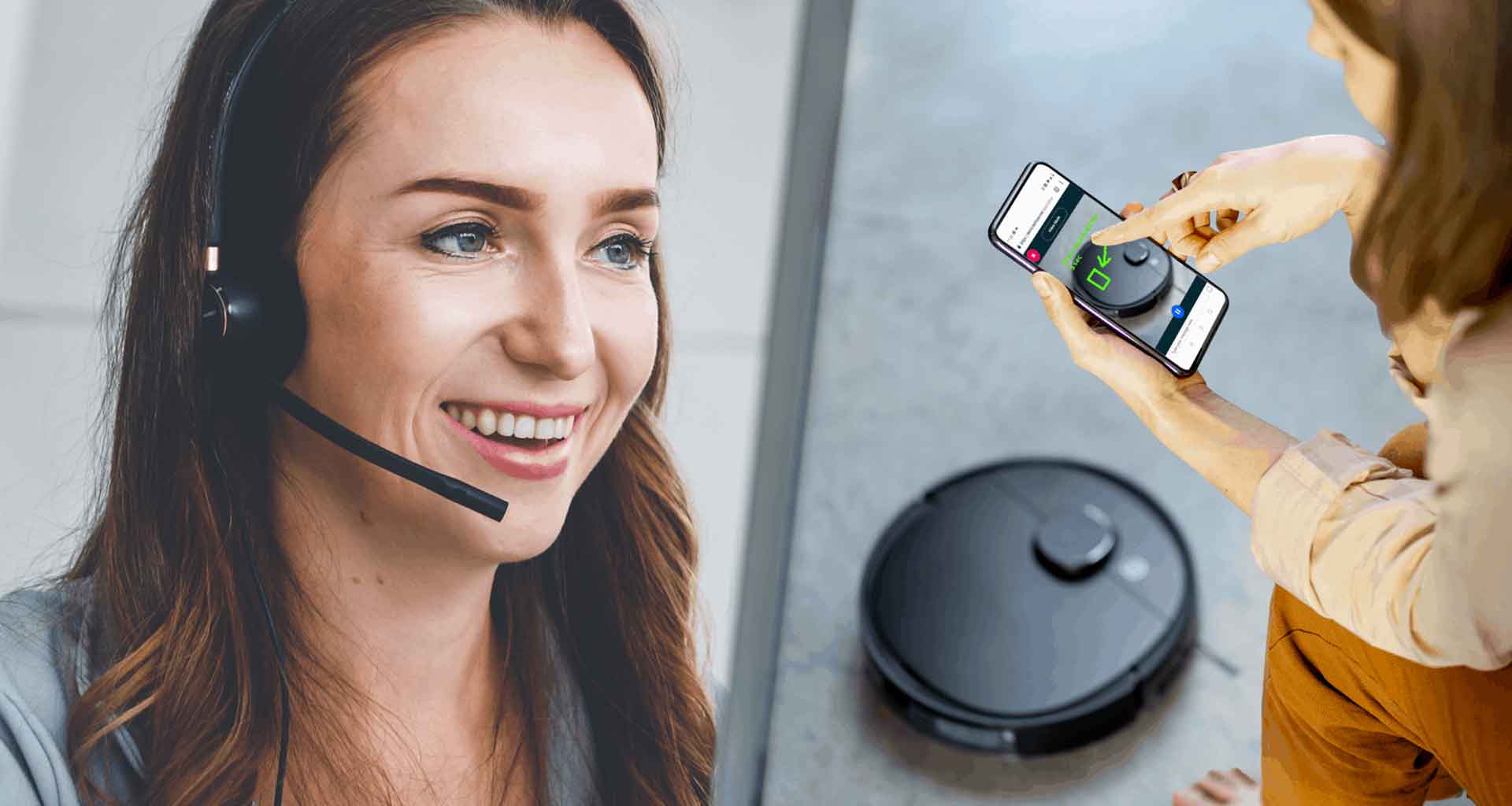Contents
We are living in a ‘remote first’ world where visual engagement has become a critical piece in our current day-to-day interactions. Zoom classrooms, livestream weddings, and GoToMeeting staff conferences have become part and parcel of our everyday lives. This remote and digital-first world has made service organizations rethink how to engage with customers. Our traditional physical channels – such as in-store browsing, in-person support or “bracketing,” which is buying multiple versions of the same item, choosing the winner, and returning the rest — need to be reimagined to fit in our new reality of remote and digital-first.
Remote visual engagement is an approach that has been proven to be a critical bridge between physical and digital interactions. Remote visual engagement goes way beyond just ‘seeing what your customer sees’ – it’s an enabler and connector for digital transformation. It’s a journey that enables organizations to add vision to more digital touchpoints and allows for more advanced use cases such as visual self-service, while automating repetitive tasks over time. As organizations advance in their visual transformation journey, they will find that they are increasingly able to reduce both customer and employee effort, optimize their costs and generate more revenue.
Drivers of Visual Engagement in Customer Service
Digital-First is Now the Norm
Let’s face it. Whoever wasn’t online before COVID-19, is online now. According to Forbes, the pandemic and its need for social distancing caused Internet usage to skyrocket by 70%. With so many people at home, Netflix has reported unprecedented membership gains, and Amazon has on boarded billions of new visitors. With so much more of our lives online, companies are prioritizing the need to deliver engaging, frustration-free online experiences for their customers. Remote visual engagement platforms can help companies achieve this goal at every point of the customer journey.
Remote Assistance is Here to Stay
Helping customers from afar is nothing new. For years, organizations have been attempting to resolve more of their customer’s issues remotely to boost overall effectiveness. Recently, the focus on remote assistance has been increasing, driven mainly by the rising expectations of customers, the growing complexity of cases, and the emergence of new technologies such as IoT diagnostics, video, AR and computer vision AI. In 2021, remote support has become a standard in customer service and is here to stay. According to a recent TechSee survey, 42% of consumers indicated that — even after the pandemic — they would prefer to get remote support and avoid technician visits altogether. Companies understand this need, with 78% of CEOs agreeing that remote collaboration is here to stay for the long-term, according to PwC.
How Visual Enables Engagement
When it comes to engagement, the visual element delivers an entirely different customer experience than a chatbot, text, or phone call. 65% of customers are visual learners, so compelling visuals and video are key to enhancing customer engagement. Also, today’s customers want to receive information quickly and effortlessly – and visual content is processed 60,000 times faster than text. Visuals also help humanize an otherwise faceless company and allow customers the opportunity to interact with it, building stronger relationships in the process.
Advantages of a Visual-First Strategy for Customer Service
There are many different benefits that a visual-first strategy brings to a service-based business.
Visuals Enhance Communication
It is the reason Zoom’s stock price has skyrocketed during the pandemic, and the company name is now commonly used as a verb. Communicating visually is the next-best thing to in-person interactions, enabling a personal and emotional connection even from afar. Nothing compares to seeing facial expressions, hand movements, and the general environment of the person you are engaging with. Nothing.
Visual Transformation will Augment Digital Experiences
Statistics say that the customer’s experience is considered more valuable than the price and product when it comes to the purchase decision. Visual experiences – video, augmented reality, virtual reality, etc. – help support the purchase decision by removing any guesswork or uncertainty. By combining visual assistance with digital channels, brands can include more of the tactile elements of in-store shopping, thereby engaging with customers more effectively and memorably.
Visuals Lower Effort and Add Convenience to Interactions
A Gartner study about customer effort reveals that customers are 94% more likely to make another purchase if they have an easy or low-effort experience with a brand during the first encounter. Visual assistance removes the frustration of back-and-forth clarifications or any misunderstandings that can easily occur with verbal descriptions. When both the brand and the customer can simply see what the other is referring to, significant friction is removed from the interaction.
Visual Capabilities Enable More Advanced Use Cases
Adding the visual element to customer interactions can allow agents to handle more use cases than ever before. “Show rather than verbally describe” lays the groundwork for advanced use cases like visual self-service. Imagine automating a common task using the power of vision — providing customers with AR-based visuals that show how to descale a coffee machine, indicate the settings on a washing machine, or explain how to install a new WiFi router. These advanced use cases facilitate a convenient and pleasant user experience. In fact, 44% of consumers claim they now would prefer to resolve more issues via self-service than before the pandemic. But the organization benefits as well. More use cases mean higher levels of call deflection to self-service, translating into optimized costs and better use of call center resources.
Keep in mind that there is no one-size-fits-all solution to implementing visual engagement. There are many touchpoints, and the starting point for one organization can be different from another’s. However, as organizations implement visual assistance across more touchpoints, use cases, and departments, they will not only become more innovative, but they will gain a competitive edge with the ability to resolve more issues remotely — gradually automating repetitive tasks — and continuously increase ROI. This ROI comes from reducing both customer and employee effort, optimizing cost of service, and generating more revenue through improved client engagement and satisfaction.
With the first stage of Remote Assistance, Customer Service organizations benefit from faster resolution times, increased first time fix rates, reduced product returns, and a greater sense of safety for customers and employees. As the Visual Transformation journey continues and Guided Assistance is implemented, organizations experience significant improvements in ROI that comes from greater levels of adoption when users initiate a wide range of actions such as product registration, warranty validation, device installation, or repair procedures. In the advanced stage of Autonomous Assistance, Customer Service organizations benefit from greater call deflection rates to self-service channels, better human resource allocation, and reduced overall operational costs.
A Visual-First Strategy for Customer Journeys: 3 Stages
It all starts with finding the right visual engagement platform. Having a unified platform allows for better visual collaboration across groups, warm transfers across channels, and the utilization of visual data to deliver AI-powered automation over time. This high level of integration would be difficult to achieve with separate systems. Once the platform is in place, the organization can offer their consumers a visual-first customer journey.
A Visual-First Strategy consists of 3 phases:
- Remote visual assistance
- Guided visual assistance
- Autonomous assistance
Let’s dive into each stage for more detail.
Stage 1: Remote Visual Assistance
The contact center agent or remote expert can see what the customer is seeing in order to provide live assistance and guidance. Think of this stage as remote “eyes” into the situation. For example, an agent can ask to see the customer’s router and explain that a cable is plugged into the wrong port, or see that a refrigerator is not functioning properly because the air flow vent is blocked, or see physical damage on an insured object to support a claim.
It also allows remote experts to see what your field service technician is repairing and provide directions from afar. For example, a technician can point a tablet at a complex issue and request help with a job, or receive visual verification that a job was completed successfully.
Stage 2: Guided Visual Assistance
The next step of a Visual Transformation is where guided assistance walks a customer through the process of capturing specific images before speaking to a live representative. In many cases, these are repetitive tasks that customers can achieve in self-service without involving a live rep at all, such as warranty verification, returns, product registration, and installation. If more help is needed, a warm transfer can allow a remote agent to access the visuals and pick up the case immediately.
For example, a customer who wants to register a new coffee machine can be guided to upload images of the product, serial number, and proof of purchase. The system recognizes the model, validates the warranty, and automatically registers the product in seconds. If more assistance is needed, the customer is transferred to a live agent who already has all the information needed to continue helping the customer.
Stage 3: Autonomous Assistance
This is the most advanced stage of the Visual Transformation, where service organizations can increase call deflection and reduce customer effort with visual, interactive guidance powered by Computer Vision AI. The visual customer assistant can deliver full self-service resolutions without interactions with human agents – think of this as a chatbot that can see. The visual assistant can recognize the product and its parts, identify the issue, and provide the resolution for the customer.
For example, a customer needs help troubleshooting their security system, which is making chirping noises. With autonomous assistance, the customer interacts with a visual tech assistant that can see using the power of Computer Vision AI. The customer is instructed to capture images of the alarm’s control unit. The system recognizes the device and then provides the customer with step-by-step guidance to resolve the issue.
This technology can also be utilized as a visual employee assistant that can offer decision support for agents and technicians by recognizing the problem and supplying the employees with next-best actions to fix the issue. For example, an IT technician completes a server installation job and captures an image of the completed work. With autonomous assistance, a visual tech assistant — powered by Computer Vision AI — recognizes that one of the cables has been placed incorrectly, and supplies the technicians with the steps needed to fix it.
Adopting A Visual-First Customer Service: Real Life Examples
Global telecom giant Vodafone uses visuals to provide their customers with more personalized support during a call. For example, if an agent realizes that the subscriber has moved to an IP-based telephony enabled router but still has an analog phone, the agent emails the customer a PDF containing links to new IP phones from a video library, making the choice simpler for the customer.
Virginia-based River Pools turned to virtual sales demos to boost their business during COVID. The company used video to visually instruct customers about which documents they would need for permits, and how to properly photograph their space for planning purposes. Homeowners are visually guided to photograph different angles of their property, including elevations and obstructions. This usage of remote visual assistance helped reduce the need for a River Pools’ project designer to do a physical site survey at the customer’s location and more than doubled the number of sales demos the company could schedule per day.
Faced by the sudden collapse in travel, global brand Airbnb shifted to help their hosts offer online events to customers. Paid activities include cooking demos, meditation, magic, virtual tours, and many other types of online events. This pivot allowed the company to stay relevant in a difficult period and advance its strategy of becoming a wide-ranging lifestyle platform.
From Digital-First To Visual-First
Driven by a digital-first mentality and the need for remote support and enhanced customer engagement, the journey of Visual Transformation is already underway. Forward-thinking organizations have recognized the benefits of a visual-first strategy and are taking steps to get there. Whether at the first stage of remote assistance, second stage of guided assistance, or third stage of autonomous assistance, brands that are moving forward in their visual engagement strategy will reap the rewards.






